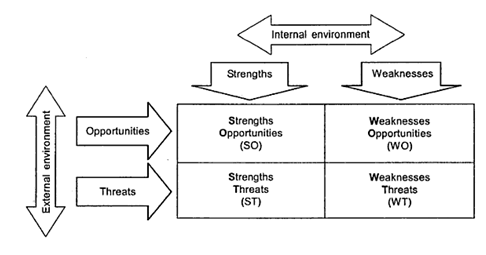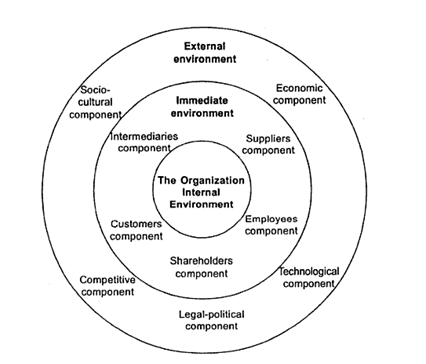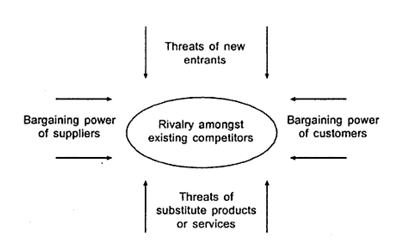Introduction
Although the telecommunications industry is growing, it is also fiercely competitive. Before competition ruled the market, telecommunications service providers paid very little attention to customers needs. Today, however, customers have become more educated and more demanding as well.
In a global economy increasingly characterized by service industries shaped by technology, customers are impatient for services customized to their individual needs and expect them to be offered at lower prices with each new rollout. Customer centered marketing, once a differentiation tactic for the telecommunications providers, has become a survival strategy (Strouse 2004, p. 4).
Due to the fierce competition that is prevalent in today’s telecommunications industry, many firms in the industry are forced to spend a lot of time planning how best to market products and services.
This paper examines some of the strategies that have been used by competing firms to increase visibility and grow profits. Specifically, the paper will focus on how marketing communications can help to support and maintain brands.
Integrated Marketing Communications
Integrated Marketing Communications (IMC) is a marketing approach in which a firm brings different marketing modes together in a unified operation.
Although the implementation of IMC may be quite demanding, this is nothing when compared to the expected returns. Generally, IMC helps to successfully move customers through the various stages of their buying process and increases profits through increased effectiveness.
By using IMC effectively, it is possible for a firm to maintain its brand, consolidate its image, and bond a customer for life. The use of a unified message often leads to a greater impact than separate messages.
At another level, research suggests that images shared across advertising and direct mail campaigns boost advertising awareness and, simultaneously, increase response to the mailshot (Smith et al. 1999).
IMC can also boost sales by stretching messages across both communication tools and business functions to create more awareness for customers to become aroused and, ultimately, buy a product or a service on a repeat basis.
Carefully linked messages help buyers by providing them with timely reminders, relevant information and, where necessary, special offers which move them more comfortably through the stages of their buying process, reducing the misery of choice in a complex and busy world.
Using IMC also increases the reliability of any marketing strategy and helps to clear any doubts in the mind of the consumer regarding the firm’s brand. Little effort is therefore spent by the consumer when making brand comparisons. When IMC is used, there is also the possibility of saving costs since some aspects of the marketing communication may be shared by different modes.
The firm can also reduce extra charges by using a single agent. But even with several agencies, time can also be saved in meetings, whether strategic, tactical or just briefings, which bring all the disciplines together.
As well as fusing bright minds into synergistic sparks, multi disciplinary meetings reduce repetition which in turn reduces workloads and subsequent stress levels. Lastly, the internal benefits of integrated marketing communications should not be forgotten.
Integration can continue beyond communications to all the other elements of the marketing mix decisions such as product decisions, price decisions, and place decisions, so that the customer is presented with a complete, comprehensive and consistent pattern. In turn, the marketing mix decisions will be better integrated with the other business functions (Smith et al. 1999).
Disintegrated communications, on the other hand, send disjointed messages which dilute message impact and sometimes confuse, frustrate and arguably arouse anxiety in some customers. In contrast, integrated communications present a reasoned sense of order. Customer relations are also reinforced by the use of regular images and messages that are relevant and useful.
Situational Analysis
A situational analysis is usually carried out to gain an understanding of the operational environment. Activities may include undertaking strengths, weaknesses, opportunities, and threats (SWOT), Political, Economic, Social, Technological, Environmental, and Legal (PESTEL) analysis or Porter’s five forces model of competitive structure.
SWOT Analysis
SWOT analysis for a firm in the telecommunications industry may include a number of strengths, weaknesses, opportunities, and threats. The SWOT analysis is best represented by figure 1.

Figure 1: SWOT Matrix (Sahaf 2008, p. 31)
It is obvious that for any firm to make the best use of its capabilities and market position it would attempt to maximize its strengths and opportunities and minimize its weaknesses and threats, SWOT analysis as demonstrated by figure 1 can offer four conceptually distinct alternate segments to the firm. These alternative segments are:
- Maximize-maximize (SO),
- Minimize-maximize (WO),
- Maximize-minimize (ST), and
- Minimize-minimize (WT)
PESTEL Analysis
This covers an analysis of current and potential influences from political pressures. Changes in laws and regulations as well as a country’s political conditions must also be examined thoroughly. Economically, it is also important to consider both local and global issues such as declines. Socially, a firm may need to analyze how different changes in the society will affect the market condition.
Technologically, it is necessary to consider how the emergence of new technology in the industry will affect the firm’s performance. Legal issues are concerned with the effect of both national and world legislation. Finally, an environmental analysis will focus on local, national, and world environmental issues. This is demonstrated by figure 2.

Figure 2: The environment facing the marketing manager (Sahaf 2008, p. 35)
The external environment that consists of forces from economic, technological, legal-political, competitive, and socio-cultural has far reaching implications on the working and performance of the organization. The study of the environment is thus a prerequisite for the success of any strategy.
Porter’s Five Forces Model of Competitive Structure
This is a useful framework for analyzing the nature and identity of competition in a given industry (Sahaf 2008, p. 62). To determine the state of the competition in a market, Porter argued that managers need to identify the structure of the market in terms of five basic competitive forces. These forces are shown in figure 2.

Figure 3: Porter’s Five Forces of Competition (Sahaf 2008, p. 63)
These forces not only have a greater impact on the profit potential, but also on the relative market power of competitors in an industry. The study of these forces would help a marketer to determine the attractiveness of the industry and the prospects for earning a return on his investment.
Consumer Analysis
Under consumer analysis, the marketing managers should be concerned with issues of segmentation, targeting, positioning and analysis of the existing competition.
As can be seen from figure 2, the marketing microenvironment is composed of forces close to the company that affect its ability to serve customers, including company strengths and weaknesses, as well as company suppliers, and competitors. The macro environment is composed of the larger political, legal, economic, socio-cultural, and technological forces that influence the microenvironment.
To manage the growth and prosperity of a firm in a dynamic marketing environment, managers need to study such elements within the environment that can influence a firm’s response to the environmental opportunities and threats (Peattie & Peters 1978).
Since such forces have a direct influence, or an effect on the marketing efforts, managers need to assess the forces in order to match their firm’s and marketing environment. Environmental study enables the managers to identify, evaluate and respond to the environmental forces that may influence their marketing decisions.
Marketing Objectives and Marketing Communications Objectives
In coming up with marketing objectives and marketing communications objectives, it is necessary for the marketing manager to consider relevant factual data that was obtained during the situation analysis stage. He or she should interpret their meaning and consequences for the firm’s product line in terms of opportunities that were identified.
Goals should then be set in terms of what the firm wants to achieve during the current planning period. When coming up with the goals, it is important for the marketing manager to ensure that they are specific, measurable, realistic, achievable, and time bound.
The marketing manager needs to generate assumptions and projections about future conditions and trends with regard to the economy, technology, and socio-cultural and political aspects such as legislation and taxes (Dalgic 1998, p. 53). It is imperative for the marketing communications objectives to consider how the communications mix can be used to strengthen the firm’s brand and market position.
The Marketing Mix
The marketing mix is a blend of the four variables or strategy elements to fit the needs and preferences of a specific target market. Each strategy is a variable in the mix. A specific combination of these variables determines the success of the marketing efforts. The mix also consists of everything the firm can do to increase the demand for its products. The 4Ps are product, price, place, and promotion and are briefly explained as follows.
Product
Product refers to anything that is capable of or can be offered to satisfy a need or want. It is essential for the firm to have a clear description of the product in a social marketing campaign at different levels.
Price
Price refers to the amount the customer has to pay in order to acquire a product or service. It is often aimed at minimizing costs by maximizing incentives to reward desired behavior or to discourage undesirable behaviors. By offering prices that are competitive, the firm will be able to retain its customers for a very long time and attract new ones.
Place
Generally, place refers to the point of sale. Strategies related to the system or channel management need to be provided to ensure that they will be as convenient and pleasant as possible for the customer to engage in the targeted behavior and access related products and services.
Promotion
Promotion refers to all the activities undertaken to make the product or service known to and preferred among the user and trade. Information on product benefits and features, fair price and easy accessibility require effective and efficient communications to bring goods and services to the target audience and inspire action.
Marketers should resort to these tools to create, communicate, and deliver values for their targeted behaviors. Although the 4Ps can be thought of as being independent, they are not isolated and are used as determinants to influence the dependent variables; the behaviors of the target market. It is the synergy of the 4Ps that makes a truly social marketing campaign possible.
Implementation
A plan for monitoring and evaluating a social marketing campaign is needed before the final budget and implementation plans are made.
It needs to be referred back to the goals established for the campaign. Monitoring is a measurement conducted sometime after the launch of a new campaign, but before its completion. It is conducted to determine if midcourse corrections are needed to ensure that marketing goals are realized.
Recommendations and Conclusion
To survive in the present business environment that is often characterized by very stiff competition, it pays to spend time and plan effectively how the firm’s goods and services will reach the consumers. There is need for the firm to carry out a thorough situational analysis as well as a consumer analysis.
SWOT and PESTEL analysis are two approaches that may be used to assess the firm’s capability and to understand the operating environment. The marketing managers may also make use of Porter’s five forces model of competitive structure to understand the environment.
By gaining a good understanding of the operating environment and the existing competition, the firm will be in a better position to devise a plan that will help it realize its objectives. Eventually, the firm will be able to maintain its brand and strengthen its position in the market.
Reference List
Dalgic, T 1998, ‘Dissemination of Market Orientation in Europe: A Conceptual and Historical Evaluation’, International Marketing Review, 15 (1): 45 – 60.
Peattie, K & Peters, L 1997, ‘The Marketing Mix in the Third of Computing’, Marketing Intelligence & Planning, 15 (3): 142 – 50.
Sahaf, MA 2008, Strategic Marketing: Making Decisions for Strategic Advantage, PHI Learning Pvt. Limited, New Delhi.
Smith, PR, Pulford, A, Berry, C, & Smith, PR. 1999, Strategic Marketing Communications: New Ways to Build and Integrate Communications with Disk, Kogan Page Publishers, London.
Strouse, KG 2004, Customer-Centered Telecommunications Services Marketing, Artech House, Norwood, MA.